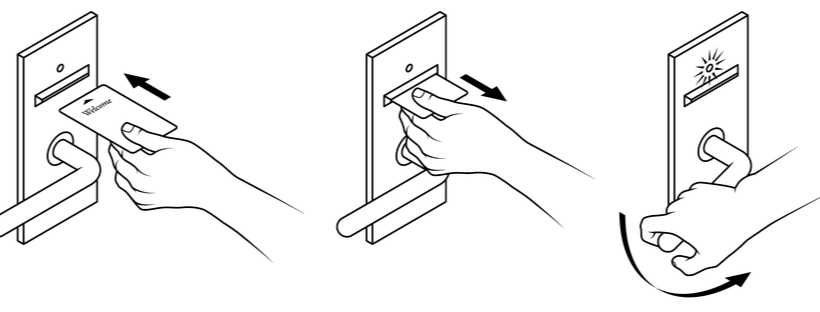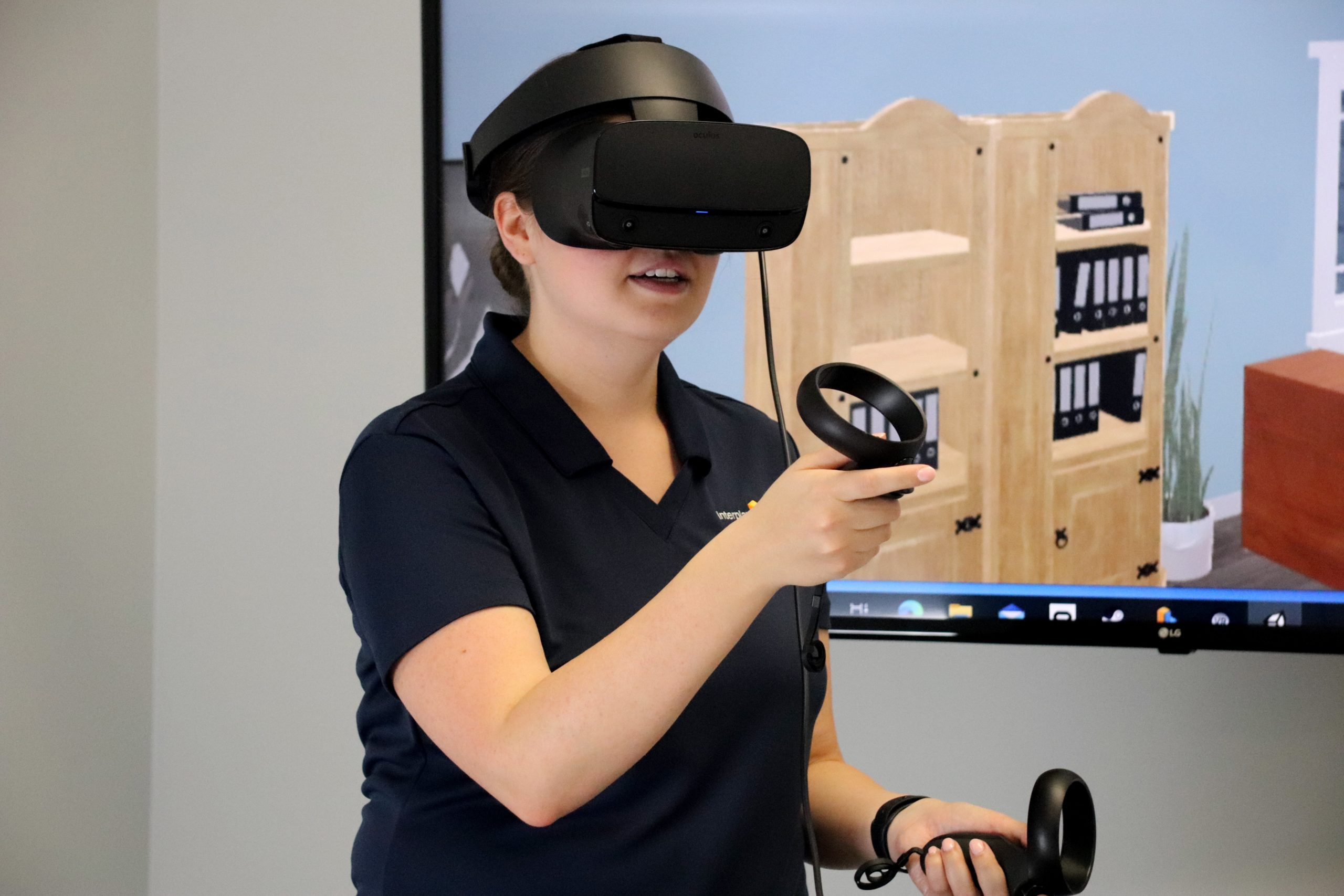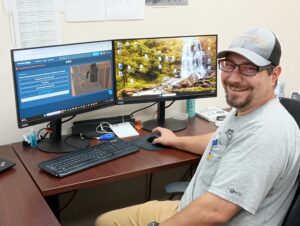Joel Berken is the Online Learning Manager for Benjamin Franklin Plumbing, One Hour Heating and Air Conditioning and Mister Sparky Electric. Through his franchise operations experience and learning and development background, Joel stands by the critical need for innovative learning.
A Common Training Scenario:
You’re a Service Manager, and you just dove into an impromptu group lecture on troubleshooting a blocked exhaust vent on a gas furnace. You’re already 10 minutes into it when one of your techs raises their hand. They inform you they’re confused and need clarification.
As you look around the room, they’re not the only team member with a confused look on their face. You take a quick poll, and it turns out that the majority of the group is requesting the training session to start back from step 1.
Had the manager started this training with some kind of visual aid like a diagram, or video, more people would likely have remained on the same page, decreasing confusion and increasing the level of knowledge retention.
Enter Visual Baselining to kick things off on the right foot.
What is Visual Baselining?
It sounds complex, but it’s quite simple. Let’s break it down:
Visual: something to be seen, such as an image.
Baselining: common ground.
In simple terms, we could define it as starting with common ground using an image. Visual baseline attempts to ensure your employees have enough context to kick things off from the same starting point, and the surest way to achieve context is through visual understanding.
Why is Visual Baselining Important?
According to the 7-38-55 rule, communication is made up of 7% spoken words, 38% voice and tone, and 55% body language. Altogether, this amounts to 45% verbal and 55% visual communication.
With over half of communication being visual, starting an explanation, conversation, or a meeting with a visual aid will undoubtedly lead to better understanding and team alignment—the key to better results.
Let’s take a look at an example.
Below are instructions about a process. Read it aloud, close your eyes, and then try to recall each step.
- Insert the key card into the slot on the door with the arrow side facing in
- Quickly remove card
- Wait for the green light to blink
- Depress the handle to open
Now, look at the image below. It’s an image depiction of the same thing. Take a few moments to look at and process the image, then try to recall what you saw.

Most of the time, after people complete this exercise, they can recall the image (visual baseline) better than the lines of text. This is because when we hear or read a process or idea, our minds become busy building the schematics and pictures of how it may be laid out.
The takeaway here is that when we start with a visual, it takes that schematic and picturing workload off the brain to retain the information better.
As an eLearning Manager for Benjamin Franklin Plumbing®, Mister Sparky Electric®, One Hour Heating & Air Conditioning®, we constantly use visual baselining to teach technicians and other employees about our branded procedures and keep everyone rowing in the same direction.
In addition, we use it for our internal operations meetings and encourage all meetings to include visuals.
Earlier, we used the example of explaining the process of using a keycard. But, you can also use it to demonstrate technology, show differentiation of ideas, or even create a new workflow.
How to Implement Visual Baselining Into Service Training
Now, you may be asking yourself, “How can I, as a Service Manager, implement visual baselining into training?”
There are two main ways.
In Your Weekly Meetings
Instead of standing in front of your team and speaking about a certain topic, leverage slide presentations, infographics, diagrams, or even equipment. For example, say you want to talk about electrical currents. Instead of lecturing, start the conversation with an image of a wiring diagram. In doing so, you’ll be able to better jumpstart your teams’ understanding of your message for the meeting.
With Online Training Tools
Most learners do not want to sit and read paragraphs and pages of text, especially about technical information. For that reason, trades training lessons are especially best fit for visual baselining, and that’s why One Hour Heating & Air Conditioning®, Mister Sparky Electric®, and Benjamin Franklin Plumbing® all use Interplay Learning.
Interplay’s training platform Interplay Learning has already done the visual creation work for us. We can give our franchise locations access to online video presentations, supplemental materials like wiring diagrams, 3D equipment simulations, and virtual reality by subscribing to the training.
Let’s say we want our Benjamin Franklin plumbers to advance their knowledge about types of drains. We can leverage the platform’s baked-in visual baselining in two ways:
1. We can assign our team Interplay’s course module on Drains, where they watch foundational videos on differentiating types of fixture drains before attending their next training meeting. Then, in the training session, we can dive much faster into customer interactions and conversations versus establishing baseline education on types of fixture drains.
Here’s the bonus to the situation. In addition, each learner gets credit for completing this video training in their user profile, is provided an assessment to ensure they hit their skills competency for drains and is given suggestions on courses that will further their learning.
Alternatively,
2. If we have extra time for our training meeting, we will play the drain video at the beginning of the meeting. We’ll even use Interplay’s images (through video presentations) to build on the deeper technical conversation. This starts our team’s knowledge on the same level and creates a better learning experience that will lead to better retention and upskilling.
Virtual Reality and Visual Baselining
While discussing Interplay, it’s worth mentioning the relationship between virtual reality and visual baselining.
In my opinion, they’ve perfected the recipe for training retention.
Much like I said in my earlier activity, we retain better when visually seeing or physically experiencing something instead of reading or hearing about it.
Think of the last time you walked around your house with the lights off. You likely stubbed your toe on your bed or a piece of furniture. The next time you walk around your home with the lights off, I can guarantee you did not stub your toe on the corner of your bed. This is because you learned your lesson by failing and experiencing the result of a bruised toe. The same goes for troubleshooting and diagnosing home service systems in VR.
Interplay takes the visuals one step further with virtual reality and lets learners safely practice technical skills without consequences. In doing so, the learner’s confidence and knowledge retention grow even greater.
This type of interactive learning plays a huge role in boosting memory recall and is one of the best ways to learn and practice hands-on skills. A report from PWC found that learners using VR are 3.75 times more emotionally connected and 1.5 times more focused than classroom learners.
Through virtual reality, Interplay puts your technicians in the field, where they’re able to flex new job skills in real-world situations to learn. And here’s the beauty of it (visual pun intended) – it’s much better if they fail at diagnosing and troubleshooting in virtual reality instead of in a real-life customer’s home.
Summary
Managers must translate their processes and ideas to their employees clearly and effectively. Utilizing visual baselining and training platforms like Interplay allows you to align with your team members to retain content better and perform more successfully in the field.

Joel Berken
eLearning Manager, Success Academy
Joel Berken creates and connects meaningful learning experiences with learners across home service brands. He is the Online Learning Manager of Benjamin Franklin Plumbing, One Hour Heating and Air Conditioning, and Mister Sparky Electric. Through his franchise operations experience and learning/development background, Joel stands by the critical need for innovative learning, measuring training, and inspiring personal development.




